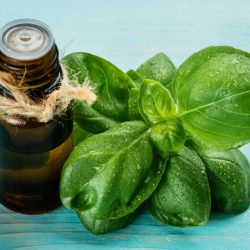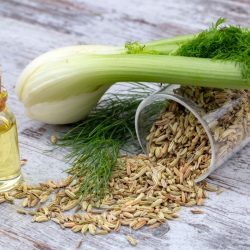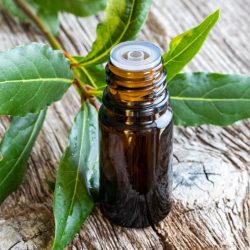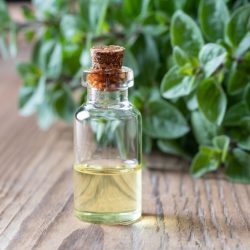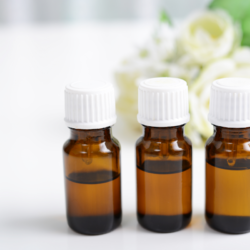Cilantro is one of the oldest aromatic herbs in the world . In Antiquity, the Romans were keen on it. The spice appears in more than 70 dishes from the collection of recipes of the gastronomic Roman Apicius . It is mentioned in Sanskrit writings, the Ebers papyrus , the Old Testament … without forgetting its use in China, more than 2000 years ago … This plant, in use for two thousand years in Asia, Europe as well as in North Africa, has undoubtedly much to tell us. Frequently mentioned by the ancient Egyptians for at least four millennia , they therefore held it in great esteem.
A little history
Certainly, the ancient Egyptians understood certain medicinal virtues of coriander (which they took to cultivating under the reigns of Ramses ), as the Ebers papyrus indicates to us . But in addition, this same grain of bug was used to make the wines more intoxicating, and mixed, once pulverized, with the seeds of anise and cumin. It was flavored with millet and barley cakes, then sprinkled also on meats and fish.
This importance was such that it is even said that the Egyptians were at the origin of the introduction of this plant in Europe. Hence it is no less than Hippocrates , Theophrastus , Pliny , Dioscorides , Galen , Columella , etc. who talk about it. For Hippocrates , it had some value in the fight against uterine pain and nervous diseases like epilepsy . According to Dioscorides , coriander plastered on corrosive and creeping ulcers overcomes them, as well as apostumes, epinyctide (unidentifiable rash), inflammation of the skin , to which Pliny adds burns, boils, inflammation of the ears and eye infections , and Serenus Sammonicus the scrofula and erysipelas .
So many external uses. Internally, we observe that cilantro was already recognized as having this antiparasitic virtue which has earned it, moreover, still being used as a dewormer . It also made it possible to guard against third-party fevers and to stop the blood flow in women during catamenial periods.
What are the pharmacological properties of Coriander seed essential oil ?
Antispasmodic property:
The linalool opposes the release of acetylcholine and reduces muscle contractions . Stomachic, the essential oil stimulates digestive, salivary and gastric functions .
Analgesic and anti-inflammatory properties:
The linalool also binds opioid receptors, and has inter alia an analgesic action of morphine type; it reduces the edema caused by carrageenan demonstrating an anti-inflammatory action . In addition, linalool interferes with the calcium channels at the level of the neuromuscular junction and reduces the contraction of the striated muscles by inducing a local anesthetic action.
Tonic and digestive anti-inflammatory , coriander acts on the gastric sphere and peptic ulcers due to stress.
Hepatic drainer , in moderate doses, it is also urogenital anti-inflammatory .
Properties on the central nervous system:
The linalool has a complex action stimulating , sedative and anticonvulsant . It promotes learning and memorization by acting on nicotinic receptors, and reduces motor activity by potentiating sleep by inhalation.
Brain tonic and antidepressant , it is a sedative plant because pƩ +.
Antimicrobial and antiparasitic properties:
The antibacterial action is demonstrated in vitro against Campylobacter jejuni, Escherichia coli, Listeria monocytogenes, Staphylococcus aureus , but is inactive on Pseudomonas aeruginosa. It is also active on Giardia lamblia, Leishmania amazonensis as well as on lice. Its antibacterial properties are explained by membrane and respiratory action and on efflux pumps.
Antifungal on candida , coriander has an activity on athlete’s foot or intertrigo inter-toes (topical treatment, 6% preparation). It is also antiviral .
Other properties:
- Progesterone-like
- Aphrodisiac, stimulating
- Adrenal, thyroid
- Astringent and skin tonic
- Antioxidant and anticancer
Does Coriander essential oil require precautions for use?
- Avoid in combination with progesterone (risk of drug interaction).
- Beware of possible gynecomastic effects in prolonged use. The linalool prevents testosterone production, avoiding the long course in males as endocrine disruptor.
- Contraindicated in pregnant or breastfeeding women.
- This essential oil is exciting at low dose and hypnotic and anesthetic at high dose.
- Avoid in children under 7 years old.
- No regular or long-term internal use (risk of nephrotoxicity).
Medical bibliographic sources and clinical trials :
- Pietro Lo Cantore, Nicola S. Iacobellis, Adriana De Marco, Francesco Capasso, Felice Senatore. Antibacterial Activity of Coriandrum sativum L. and Foeniculum vulgare Miller Var. vulgare (Miller) Essential Oils. J. Agric. Food Chem., 2004
- Elgayyar M, Drafting FA, Golden DA, Mount JR. Antimicrobial activity of essential oils from plants against selected pathogenic and saprophytic microorganisms. J Food Prot. 2001
- Silva F, Ferreira S, Queiroz JA, Domingues FC. Coriander (Coriandrum sativum L.) essential oil: its antibacterial activity and mode of action evaluated by flow cytometry. J Med Microbiol. 2011
- Freires Ide A, Murata RM, Furletti VF, Sartoratto A, Alencar SM, Figueira GM, de Oliveira Rodrigues JA, Duarte MC, Rosalen PL. Coriandrum sativum L. (Coriander) essential oil: antifungal activity and mode of action on Candida spp., And molecular targets affected in human whole-genome expression. PLoS One. 2014
- Isopencu, Gabriela, and Mariana Ferdes. Aspects regarding the influence of concentration of components with antifungal activity from some essential oils. Rev Chim 63.2 (2012)
- Beikert FC, Anastasiadou Z, Fritzen B, Frank U, Augustin M. Topical treatment of tinea pedis using 6% coriander oil in unguentum leniens: a randomized, controlled, comparative pilot study. Dermatology. 2013
- Samojlik I, Lakić N, Mimica-Dukić N, Daković-Svajcer K, Bozin B. Antioxidant and hepatoprotective potential of essential oils of coriander (Coriandrum sativum L.) and caraway (Carum carvi L.) (Apiaceae). J Agric Food Chem. 2010


